The Most Precise Signal in the Universe
And how, if we manage to harness it on Earth, it could be the most accurate probe in all of scientific history.
“We… are what happens when a primordial mixture of hydrogen and helium evolves for so long that it begins to ask where it came from.” –Jill Tarter
And if we look out into the Universe, it begins to provide us with some tantalizing hints. From right here in our own cosmic playground on Earth to signals from beyond our own Solar System and even our galaxy, there’s no shortage of information to be gathered from the Universe itself.
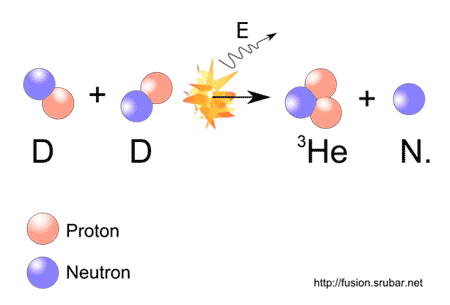
Most of our information comes from a very fundamental type of interaction: a transition from one energy state to another. In the center of a star, for example, two subatomic particles — protons, neutrons or complex nuclei — can fuse together, transitioning into a lower-energy state and emitting energy in the process.
The emitted energy, after literally trillions of interactions, eventually makes its way to the surface of that star, where it eventually exits into the Universe as starlight.

But there are plenty of other transitions as well that emit light of all sorts of wavelengths. Perhaps most familiar to us are the atomic transitions, where electrons bound to nuclei can either absorb a photon and jump up to a higher energy state, or emit a photon as they jump down to a lower energy state.

Each and every element has their own, unique energy levels that electrons can transition between, corresponding to quantum properties unique to each and every atom.
These transitions also correspond to spectral lines, where — if you shine a light on ground-state atoms — they’ll absorb light of a very particular frequency, or — if you energize atoms to an excited state — they’ll spontaneously emit light of a very particular frequency.
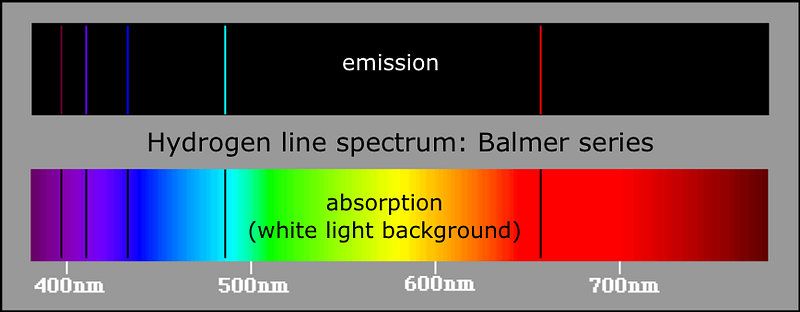
The thing that you might not realize is this: the emitted or absorbed light isn’t of one exact frequency, but rather spans a range of frequencies centered on a particular value. There are three reasons for this:
1.) There’s an inherent width to any line, which is determined by the speed of the transition and the frequency of the light. Transitions that occur quickly have broader lines, while those that occur more slowly have narrower ones. Also, very low frequencies have broader widths, while higher frequencies have narrower ones.

2.) Thermal effects. When a gas (or any material) is heated, the profile of either emission or absorption lines broadens. This is why, for example, when we look at the spectrum of a hot thing (like the Sun), its spectral lines are significantly broader than you’d find if you took those same lines in a laboratory on Earth.
3.) And finally, there are kinetic effects. If atoms are completely stationary, you’ll get a very narrow line, but if atoms move back-and-forth rapidly — at hundreds of kilometers per second, for example — the line will broaden because of the Doppler shift: some atoms moving towards you, resulting in a blueshift, and others moving away from you, giving a redshift. This occurs frequently in astrophysical sources of gas, like galaxies.

But these lines are also incredibly interesting, because they’re so well-understood! Even though quantum mechanics is confusing and open to interpretation in a lot of ways, its predictions for phenomena like this are precise and concrete.
This understanding also gives us an opportunity — particularly if we can control for thermal and kinetic effects — to understand the inherent widths of these lines, and to look for exotic effects that could cause an additional broadening of these lines.
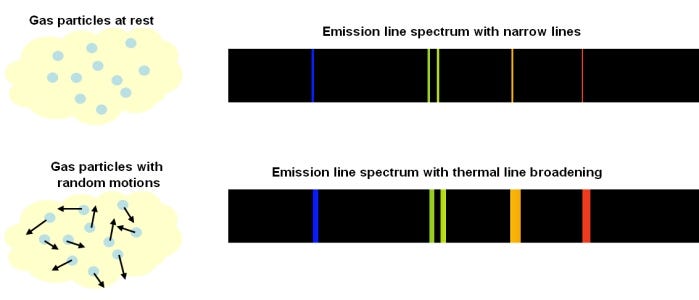
Most lines are too broad, inherently, to find any effects other than thermal or kinetic ones, because they’re created on extremely short timescales. (Most atomic transitions, for example, take place on the order of a single nanosecond, or 10^-9 seconds!) But there’s one line that could provide a remarkable opportunity for this: the 21-cm line of hydrogen!

You see, when hydrogen atoms are formed, they’re among the simplest systems in the Universe, consisting solely of an electron and a proton. Very quickly, in the absence of everything else, they’ll move into the ground state, where the electron orbits the proton in its lowest-energy shell: the 1s state.

But it might not be perfectly in the ground state. You see, electrons and protons both have spins, and these spins can be either aligned, as in they can both be spin up or spin down, or they can be anti-aligned, where one is spin up and one is spin down.
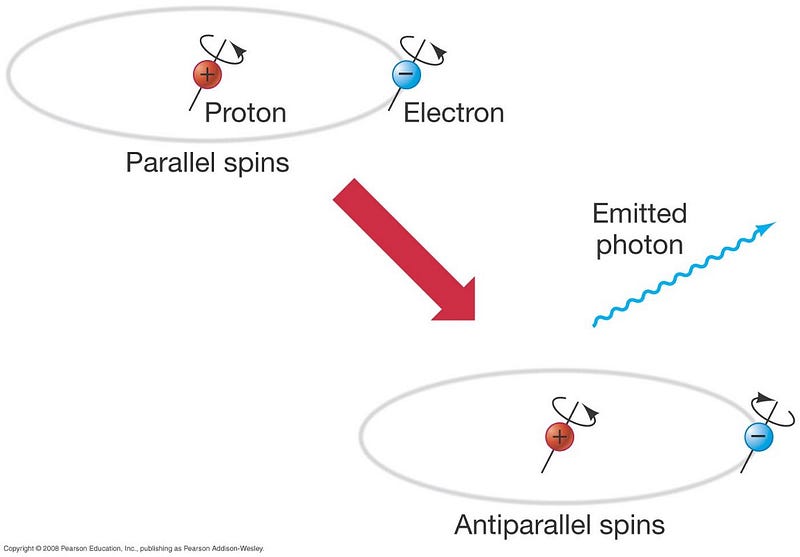
The energy difference between these two states is minuscule: at 5.9 micro-electron-Volts, it’s one of the smallest energy transitions known. This corresponds to photons of extremely low energies, and with wavelengths that are whoppingly macroscopic: of 21 centimeters in wavelength! It’s also forbidden quantum mechanically, so that the only way to move from the “excited” state to the ground state is through quantum tunneling, an exponentially suppressed process.

Nonetheless, it does happen, albeit on timescales of around ten million years on average. In both principle and in practice, we can use this for a number of scientific purposes, including for probing the Universe before any stars or luminous sources had formed. But if we wanted to get really ambitious — if we wanted to dream big — we could take advantage of the extremely small natural line width of this configuration,

to search for what has previously been unthinkable.

All objects in the Universe that gravitationally interact with one another affect not only spacetime, causing its curvature through their matter and energy, but are themselves affected by the curvature of spacetime. If you have multiple objects moving through it at once, they’ll cause the emission of gravitational waves as they interact, which itself will have specific frequencies. Gravitational waves are also generated by transient astrophysical phenomena like supernovae, by orbiting black holes, and during inflation as well.
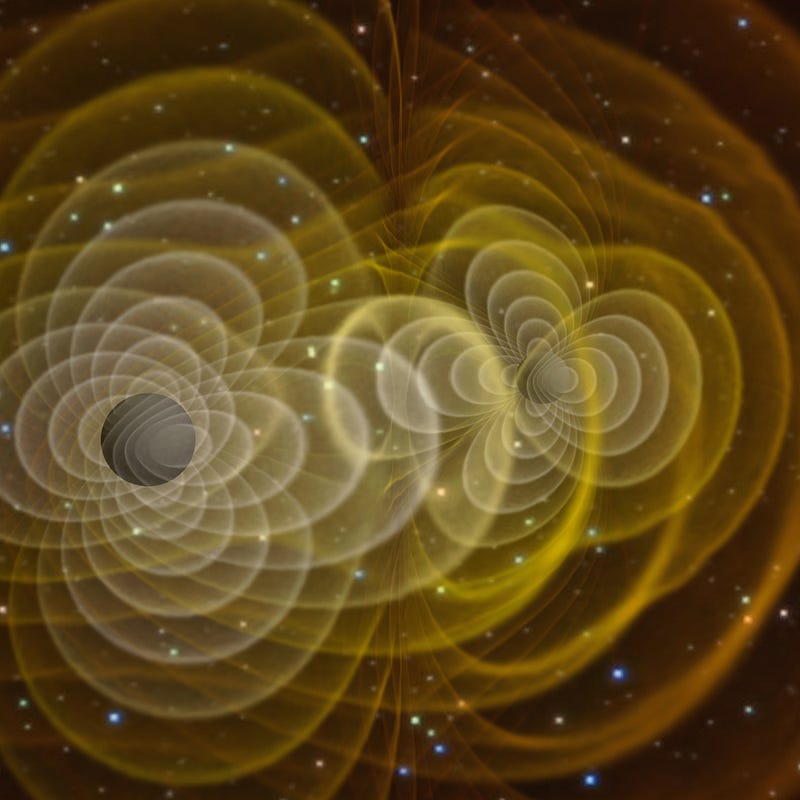
Now, here’s the kicker: gravitational waves can broaden any emission line, and since this one is already inherently narrow to a width of ~10^-24, we can simply cool down a collection of hydrogen atoms to remove thermal and kinetic effects, and measure the width to arbitrary accuracy. If we get the exact prediction from quantum mechanics, there are no gravitational waves. But if we get a measurement of a width that fluctuates to be ever-so-slightly larger, we will have detected them!
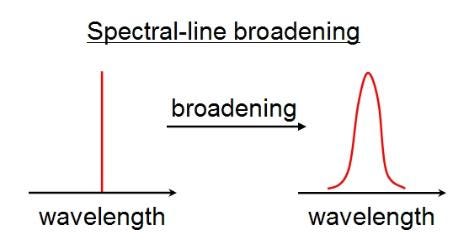
Other phenomena that could be responsible for such a non-transient feature, or one that’s always present, would be a gravitational wave signal due to extra dimensions, a Universe that never had an inflationary phase or a time-varying gravitational constant. It’s an incredibly ambitious, far-fetched idea, as it requires cooling to temperatures on the order of picoKelvin just to measure the inherent width, and even lower than that (down to attoKelvin scales) if you want to measure realistic gravitational waves. Nevertheless, it’s a fantastic theoretical possibility, and one that could shed light on an otherwise invisible, undetectable phenomenon permeating our Universe!
The rest is left as an exercise for the experimentalists.
Leave your comments at the Starts With A Bang forum on Scienceblogs!





